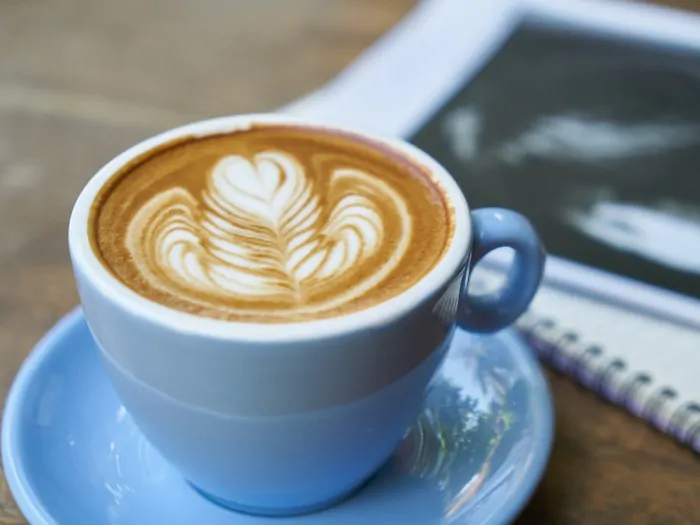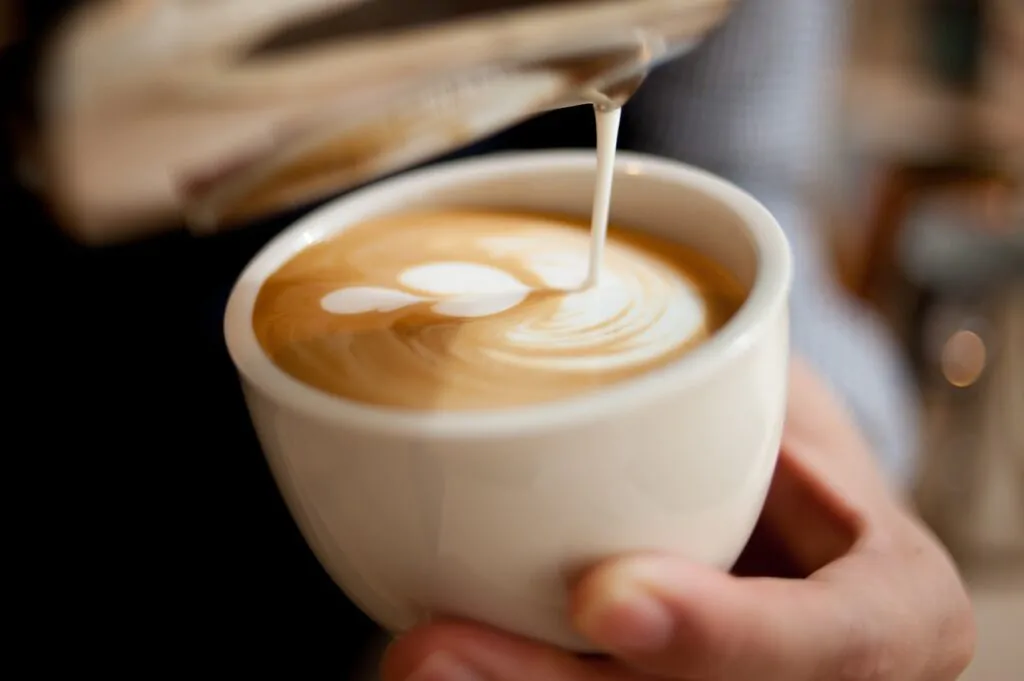Every latte tastes amazing – but are lattes supposed to be warm or hot?

I’m a huge fan of piping hot coffee. The hotter it is, the better it tastes. However, one of my friends always complains that my lattes are too hot. When they made me a latte, it was warm, smooth, and subtle.
Temperature is important in cooking and even more important when brewing drinks. The temperature of your latte can greatly impact the taste and composition, which is why it’s so important to get the process right.
Should lattes be served warm or hot? Most espresso drinks, including lattes, are served somewhere between 150 and 165 degrees Fahrenheit. 160 degrees is the standard temperature for an on-the-go beverage.
Lattes are hot, but there’s nothing wrong with serving a warm latte in the comfort of your own home.
Deciding whether lattes or cold or hot is a matter of personal preference. However, it’s generally accepted that the best espresso is made with hot water – and that’s going to result in a hot latte.
How Hot Is A Latte Supposed To Be?
A latte contains two main ingredients: espresso and milk. Espresso is brewed as hot as possible, while steamed milk is heated until right before it scalds. When the milk is added to the espresso, the resulting drink reaches a temperature somewhere in between.
This means that the overall temperature of a latte is largely determined by the espresso machine. The same water boiler is often used to brew coffee and heat the steaming wand, which keeps temperatures relatively constant across multiple drinks. Some espresso machines have two boilers, allowing you to make espresso and steamed milk at different temperatures.
Making a latte is definitely more of an art than a science. Small changes in the way you froth or pour the milk can actually have a huge impact on the temperature. And if you let your espresso sit for a moment, your drink will be much cooler when the milk is finally added.
Lattes In A Cafe

Cafes and coffee shops have professional brewing equipment, so they can easily make lattes at the perfect temperature every time. You can usually expect a professional latte to be piping hot and topped with a tower of perfectly-frothed milk foam.
Most cafes serve their lattes somewhere between 155 and 165 degrees Fahrenheit. Baristas who work quickly tend to serve hotter lattes. If you have to wait for your drink, it might be a little cooler when you take the first sip.
However, if you purchase a latte from a fast-food restaurant, you can actually expect the drink to be on the cooler side. Many restaurants run their water boilers at low temperatures to ensure employee safety. The drinks they produce are still delicious, but they won’t always stand up to the scrutiny of a true coffee connoisseur.
Lattes On The Go
In a cafe, lattes are typically served in a wide, bowl-shaped cup with plenty of room for foam and latte art. These porcelain cups hold heat well and are easy to drink from, so they work for beverages of any temperature.
But if you make a latte in a to-go cup, temperature becomes a more serious concern. Portable cups are usually made from paper or cardboard; these materials insulate well, but not nearly as well as porcelain. This means that the latte needs to be hot enough to maintain heat, but it also needs to be cool enough to avoid burning your hand when you grab the cup. For more, read our guide to the best latte cups.
Baristas across the world have put thought into the perfect to-go latte temperature. The consensus is that a temperature of 160 degrees will keep your drink hot without scalding your hands or mouth. Of course, coffee loses heat as soon as it’s poured, so your actual drinking temperature may be much lower.
Lattes At Home
Homemade lattes are usually colder than professional lattes. This is because most countertop espresso machines can only get the water so hot; unless you’ve bought high-quality equipment, your water boiler might not actually reach a temperature of 165 degrees.
Another reason homemade lattes tend to be let hot is that you can’t make the espresso and steam the milk at the same time. One of your ingredients is going to cool off while you’re preparing the other, resulting in a drink that isn’t quite like the one your barista makes.
These problems can be easily solved by purchasing a better espresso machine. Look for one that has a double boiler so you can steam your milk while the espresso is brewing. If you choose a single-boiler machine, make sure it gets the espresso nice and hot so it can sit while you finish the drink.
However, you should also recognize that the difference in temperature between professional and homemade lattes really isn’t that noticeable, especially if you’re a casual coffee drinker. There’s nothing wrong with letting your espresso sit for a moment while you create a beautiful tower of milk foam.
How Temperature Impacts Espresso
Espresso is a strong, condensed style of coffee that’s made by extracting coffee beans with hot and pressurized water. The temperature of the water used will directly impact how the final shot of espresso tastes.
Basically, the hotter the water is, the more flavor will be extracted from the espresso beans. If the water is too hot, you’ll get a burnt and bitter flavor palette. If the water is too cold, you won’t get any flavor at all.
The best espresso is usually brewed at around 200 degrees Fahrenheit. You can vary this temperature by about 5 degrees in either direction to change the flavor of your brew.
Some espresso machines give you a temperature readout. If yours doesn’t, you can measure the brewing temperature by placing a coffee thermometer in a shot of fresh espresso before the heat has time to dissipate. If the meter reaches at least 195 degrees Fahrenheit, you can trust the quality of your brew.
How Temperature Impacts Milk
The perfect temperature for latte milk is actually something of a debate. Latte artists prefer colder milk to make their designs, but fans of foam prefer to use hotter milk because it’s less likely to collapse.
The temperature of your milk will also greatly impact the taste. Colder milk is sweeter, while hot milk doesn’t have much of a taste at all. You can use this to adjust the flavor profile of the cappuccinos and lattes you make at home.
In general, the best temperature for latte milk is somewhere between 120 and 160 degrees Fahrenheit. When you’re just starting, try foaming milk at around 140 degrees; pay attention to how the bubbles form and how the milk tastes when you’re done.
Making Hot Lattes At Home

I’ve generally found that hot lattes taste better. I like to make my espresso as hot as possible, foam the milk at medium heat, and combine the two to get a drink with a temperature of about 160 degrees.
The temperature of your lattes is really determined by your espresso machine. But if you want hotter coffee, these tricks might help you get the temperature you’re looking for.
- Buy a thermometer. You need a way to measure the temperature of your coffee. Any food-safe thermometer will work; I recommend getting one with a long handle.
- Make your espresso first. Espresso is brewed at hot temperatures and can usually sit for a few seconds while you finish the milk. Just remember to work quickly; if espresso sits for too long, it goes stale.
- Get a hot plate for your espresso. If you’re really worried about temperature, you can get a small hot plate to keep your shot of espresso on while you finish making the drink. Some espresso machines come with a built-in warming plate.
- Use a separate foaming wand. Instead of foaming your milk after the espresso is done, try heating the milk in a pan and foaming it by hand while the espresso brews. This gives you fresher and hotter lattes at the expense of a little extra cleanup.
Related Questions
Can you make a cold latte?
Iced lattes are a delicious treat that every coffee lover should try. This drink involves fresh espresso, ice cubes, and cold milk. Aside from temperature, the main difference between iced lattes and regular lattes is that the milk is not foamed before it’s added to the drink.
What temperature is best for steamed milk?
To make amazing latte foam, froth your milk at a temperature of 150 degrees Fahrenheit. This temperature is hot enough to hold the foam together but not so hot that the milk will scald.
Related Article: CAN YOU MAKE LATTE ART WITH REGULAR COFFEE?
